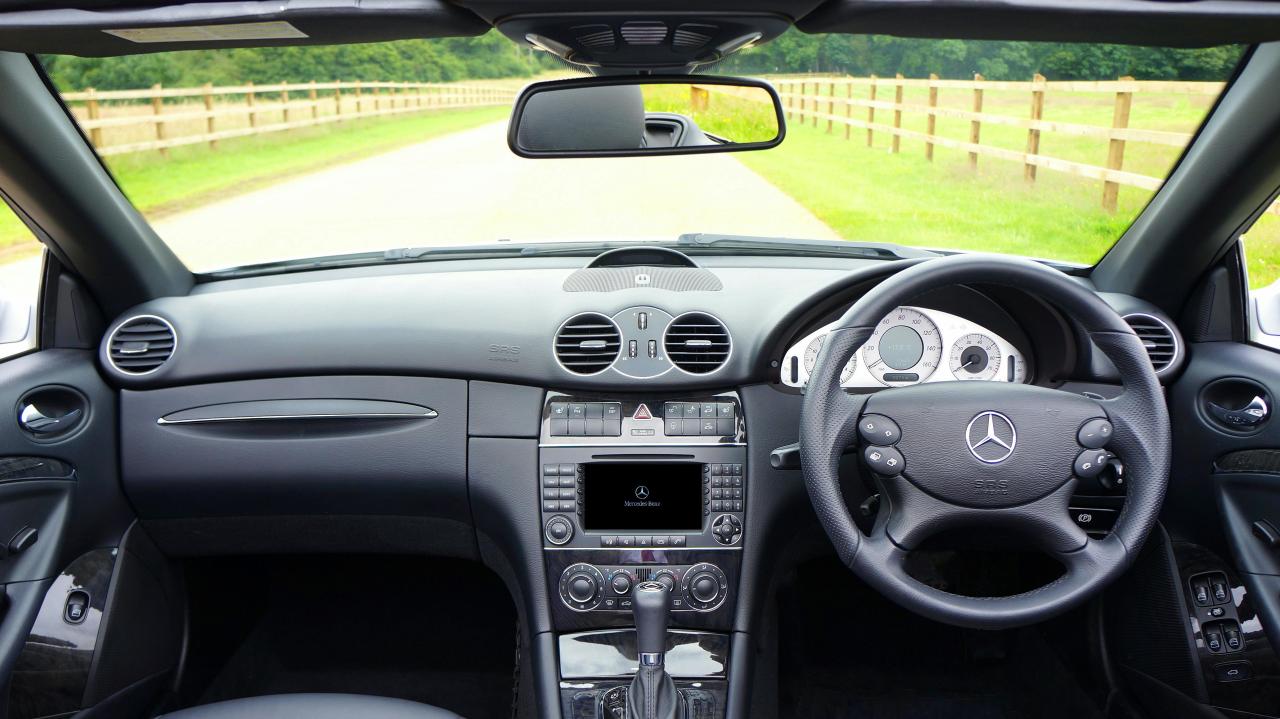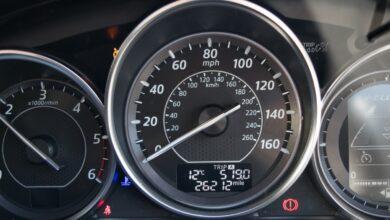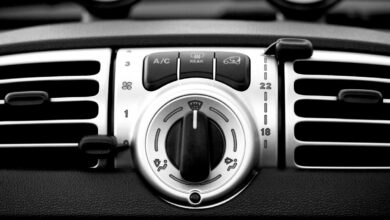Autonomous Driving: AI Systems Driving The Future of Mobility

The foundational architecture of personal transportation, built upon the century-old reliance on direct, continuous human control, is currently navigating an irreversible and profound technological revolution. Historically, the burden of managing vehicle safety, navigation, and complex decision-making rested entirely on the biological and cognitive capacity of the human driver. This traditional, human-centric model is inherently flawed, contributing to astronomical accident rates, severe traffic inefficiencies, and massive personal and societal costs globally.
The emergence of Autonomous Driving Systems (ADAS), powered by sophisticated Artificial Intelligence (AI) and advanced sensor fusion, represents the indispensable, transformative solution to this systemic problem. These integrated AI systems are meticulously engineered to perceive the environment, predict the actions of other road agents, and execute driving decisions faster, more reliably, and with far greater consistency than any human could ever achieve.
This crucial discipline is far more than a simple driver convenience feature or a technological upgrade. It is a fundamental safety mechanism that promises to revolutionize urban planning, optimize commercial logistics, and drastically reduce the devastating incidence of road fatalities.
Understanding the defined levels of automation, the core sensor technology, and the necessary integration of AI is absolutely paramount. This knowledge is the key to comprehending the engine that drives the future trajectory of mobility and the entire automotive industry’s business model.
The Non-Negotiable Imperative of Automation
The strategic shift towards autonomous driving is primarily driven by the imperative to enhance safety and efficiency dramatically and systemically. Human error, stemming from distraction, fatigue, or impaired judgment, is the documented and primary cause of the vast majority of all global road accidents. AI-powered Autonomous Vehicles (AVs), operating with tireless vigilance, eliminate these pervasive human frailties entirely. This technological substitution is mandatory for achieving truly safer, statistically verifiable transportation networks.
Efficiency gains are a secondary but massive economic driver for this technological shift. Autonomous systems can optimize routes collectively, maintain precise speed and minimal following distances, and actively minimize unnecessary braking and acceleration. This highly optimized traffic flow reduces severe congestion. It also improves overall fuel or energy efficiency significantly across the entire transportation network.
The economic value extends profoundly into the crucial commercial logistics sector. Driverless trucks and autonomous delivery systems can operate continuously, 24 hours a day, without mandated rest periods or shift changes. This continuous operation maximizes asset utilization. It drastically reduces labor costs in the massive shipping and delivery industries. The cost efficiency is immense.
The entire automotive industry recognizes that the transition to Level 3 and Level 4 automation represents the critical commercial tipping points. These are the levels where the human driver can legally disengage their attention from the driving task under specific conditions. This legal transition unlocks the true economic and social benefits of self-driving mobility. The technology must prove itself to be exponentially safer and more reliable than human drivers.
Defining the Levels of Vehicle Autonomy (SAE)

The industry utilizes a standardized framework, established by the Society of Automotive Engineers (SAE), to precisely define six distinct levels of driving automation. This classification system clarifies the degree of human involvement required. It meticulously defines the specific responsibilities of both the driver and the automated system. The transition between levels is strictly defined.
A. Level 2 (Partial Automation)
Level 2 (L2) represents Partial Driving Automation. The system can simultaneously control both the steering and the acceleration/deceleration (speed) under specific, limited conditions. The human driver, however, must remain fully engaged. They must continuously monitor the driving environment and be ready to take over control instantly at any time. Systems like Adaptive Cruise Control combined with Lane Centering are commonly cited as L2 features (ADAS).
B. Level 3 (Conditional Automation)
Level 3 (L3) represents Conditional Automation. The system manages all driving tasks under specific, limited operational design domains (ODDs), such as congested highway cruising or specific traffic jams. Crucially, the human driver is legally permitted to disengage their attention from the road. The system will issue a non-negotiable notice to the driver to take over control when the limits of the ODD are reached. The driver must be ready to safely regain full control within a short, defined transition period. L3 is the first level where true “eyes-off” driving is permitted.
C. Level 4 (High Automation)
Level 4 (L4) represents High Automation. The vehicle manages all driving tasks autonomously within a well-defined ODD (e.g., a specific geo-fenced urban area or fixed campus route). If the system encounters a situation it cannot handle, it will safely execute a “minimal risk condition.” This means the vehicle safely pulls itself over and comes to a complete, controlled stop without human intervention. Human driving intervention is not required. L4 vehicles are now being deployed in commercial robotaxi and autonomous delivery services in limited cities.
D. Level 5 (Full Automation)
Level 5 (L5) represents Full Automation. The vehicle is designed to perform all driving tasks under every single road, weather, and environmental condition imaginable, without any human intervention whatsoever. The L5 vehicle would not even require a steering wheel or pedals. L5 is considered the ultimate, aspirational, and final goal of autonomous technology. This full automation level does not yet exist commercially and requires significant further technological breakthroughs.
Sensor Fusion and AI Processing

The ability of an Autonomous Vehicle (AV) to safely perceive, predict, and react in the dynamic real world relies entirely on the complex integration of multiple sensor types and massive, real-time AI processing. No single sensor provides sufficient data integrity for safety. Sensor redundancy and fusion are mandatory.
E. Sensor Suite (Lidar, Radar, Cameras)
AVs utilize a sophisticated, redundant sensor suite. This suite includes Lidar (Light Detection and Ranging), which uses laser pulses to create detailed, high-resolution 3D maps of the immediate environment. Radar uses radio waves to measure speed and distance, excelling in adverse weather conditions like fog or heavy rain. High-Resolution Camerasutilize powerful computer vision to identify objects, pedestrians, and traffic signs. The continuous fusion of data from these three distinct sensor types ensures a robust, reliable, and redundant situational awareness model.
F. Sensor Fusion and Environmental Modeling
Sensor Fusion is the crucial AI process that intelligently combines the vast, disparate data streams from all the onboard sensors into a single, cohesive, highly reliable model of the external environment. AI algorithms continuously weigh the inputs. They compensate for the known limitations of any single sensor (e.g., Lidar’s poor performance in fog, camera’s difficulty in extreme darkness). This integrated, predictive model is necessary for all subsequent safe driving decision-making.
G. Machine Learning and Prediction
Artificial Intelligence and Machine Learning (ML) are the intelligence engines of autonomy. ML models are trained on billions of miles of real-world driving data. This massive training enables the AI to accurately and instantly predict the trajectory and likely behavior of other road users (pedestrians, cyclists, other vehicles). This predictive capability is essential for safe, proactive navigation in complex urban scenarios.
H. High-Performance Computing (HPC)
The advanced functions of the AV require powerful High-Performance Computers (HPCs) integrated directly into the vehicle architecture. These specialized computers process immense volumes of sensor data instantly. This immediate, localized processing is mandatory for the real-time, low-latency safety decisions required for autonomous operation. Relying on a distant cloud server for core decisions would introduce fatal latency.
Connectivity and Safety Infrastructure
The scalability and ultimate safety of Autonomous Vehicles are inextricably linked to the continuous reliability of advanced network connectivity and external infrastructure communication. V2X technology fundamentally enhances situational awareness. Network reliability is a non-negotiable safety requirement.
I. Vehicle-to-Everything (V2X) Communication
Vehicle-to-Everything (V2X) communication is the indispensable connectivity layer. V2X allows the AV to exchange real-time safety, traffic, and environmental data instantly with other vehicles (V2V) and with surrounding infrastructure (V2I). This shared, instantaneous information exchange expands the vehicle’s situational awareness far beyond the limited range of its immediate onboard sensors. V2X significantly enhances collective road safety and optimizes traffic flow efficiency.
J. 5G and Ultra-Low Latency
The deployment of V2X and remote fleet management relies heavily on 5G networking and its Ultra-Reliable Low-Latency Communication (uRLLC) pillar. The network must be fast and reliable enough to ensure that critical safety data is transmitted and received instantly. This low latency is non-negotiable for enabling real-time remote commands and ensuring safety during high-speed autonomous operation.
K. Over-the-Air (OTA) Updates
The AI’s safety and functional performance depend on continuous software refinement. Over-the-Air (OTA) updates are the mandatory mechanism for delivering performance enhancements, feature additions, and crucial security patches to the vehicle’s control software wirelessly. OTA ensures that the vehicle’s software remains current and protected throughout its operational lifespan.
L. Digital Twins and Simulation
Developers rely on sophisticated Digital Twins and simulation environments. These virtual replicas of real-world environments allow AI models to be safely trained and tested for millions of miles under every conceivable failure scenario (e.g., unpredictable weather, sudden obstacles). Simulation is mandatory for achieving the necessary high safety threshold before real-world deployment.
Regulation, Ethics, and Deployment
The widespread deployment of Autonomous Vehicles requires navigating complex regulatory frameworks, ethical dilemmas, and overcoming deep public acceptance hurdles. The legal and social structure must adapt to the new reality of machine drivers. Public confidence is mandatory for adoption.
M. Regulatory Frameworks and Liability
Governments are actively developing regulatory frameworks to define the specific legal liability in the event of an accident involving a machine driver. Laws must establish clear, verifiable safety standards and deployment requirements for AVs within defined operational design domains (ODDs). Regulatory clarity is essential for accelerating technological development and securing public permission for deployment.
N. The Ethical Dilemma (The Trolley Problem)
AV programming must address severe ethical dilemmas. These dilemmas often involve scenarios where the AV must choose between two bad outcomes (e.g., protect the occupant or sacrifice the pedestrian). The AV’s decision-making algorithms must incorporate explicit, auditable moral and ethical frameworks. These frameworks are subject to intense public and legal scrutiny.
O. Cybersecurity Risk
The software-defined nature of AVs introduces immense cybersecurity risk. AVs must be rigorously protected from malicious hacking that could remotely seize control of the vehicle or compromise its sensor data integrity. Robust, multi-layered cybersecurity protocols are non-negotiable requirements for safety and public trust. The integrity of the in-car software is paramount.
P. Public Acceptance and Trust
The speed of deployment is ultimately constrained by public acceptance and trust. Consumers must be convinced that the machine driver is statistically and verifiably safer than a human driver. Manufacturers must maintain radical transparency regarding the system’s capabilities, limitations, and failure protocols. Building public confidence through flawless operational track records is the long-term goal.
Conclusion
Autonomous Driving is the essential technological revolution eliminating human error from the act of transportation.
The core goal is the achievement of Level 3 and Level 4 automation, which permits the human driver to safely disengage from the critical driving task.
Safety is guaranteed by the complex integration of redundant sensors, including Lidar, Radar, and high-resolution cameras, into a unified model.
AI and Machine Learning are the intelligence engines that predict the behavior of other agents and execute crucial driving decisions in real-time.
Ultra-low latency 5G networking and V2X communication expand the vehicle’s situational awareness far beyond the limits of its onboard sensors.
The economic imperative is the massive reduction in commercial logistics costs by enabling 24/7, continuous operation of driverless transport fleets.
Regulatory clarity and the development of auditable ethical programming standards are mandatory for securing public permission for widespread deployment.
Cybersecurity defense is non-negotiable, requiring continuous OTA updates and multi-layered protocols to protect the vehicle’s critical control software.
The transition to autonomous vehicles will fundamentally reshape urban planning by allowing for the reallocation of space previously dedicated to parking and roads.
This technology promises a profound societal benefit by drastically reducing the devastating incidence of road fatalities caused by human error.
Autonomous Driving stands as the final, authoritative guarantor of efficiency, safety, and productivity in the future of global mobility.
Mastering this complex blend of AI, engineering, and data science is the ultimate key to achieving the next major phase of human transportation.


